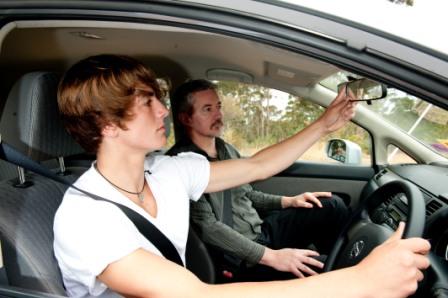|
How to form good driving habitsPart of the task of great driving is mastering the art of forming good habits.
It's easy to pick up habits from watching others and doing what they do; be discerning - make sure you are influenced only by quality driving habits.
Form habits through correct repetitionAim to do things the correct way, many times, and don’t be satisfied with sloppy performance.
If you do something a number of times correctly, it will begin to become a habit that works reliably.
If you make a mistake while you are developing your habits, work out why, fix that problem, and keep doing it again the correct way.
Alternatively, have someone else test you - ask someone who knows what the correct habits are to watch you drive in an unfamiliar situation or while you’re distracted.
A list of good driving habits Here is a list of driving actions that form the basis of good driving habits.
Opinions differ on what's 'correct' when it comes to driving habits; this list conforms to what most professional driving instructors teach.
Preparing to drive- Adjust the seat for effective control and comfort.
- Adjust all three mirrors for the best view.
- Fit and adjust your seat belt and head restraint.
- Check your passengers are safely seated.
Indicating- Indicate for at least five seconds before you pull out from the kerb.
- Indicate for at least three seconds before turning.
- Indicate for at least two seconds before beginning to change lanes.
- Indicate before you steer off roundabouts (wherever practical).
- Look in your mirror before you indicate.
- Look in your mirror before you put your foot on the brake.
- Indicate before you brake.
Look around you- Slow down if you can't see what's happening five vehicles in front of you.
- Slow down at intersections and look for other cars even if you have right of way.
- Look into intersections regardless of having right of way.
- Keep your eyes scanning the situation all around you.
- Look over your shoulder (headcheck) before beginning to change lanes and in other situations where vehicles could be in your blind spot.
Don’t bend the rules- Come to a complete stop (no rolling) at stop signs.
- Ensure your maximum speed is always slightly under the speed limit.
- Stop for green lights when traffic in front of you is not leaving the intersection.
- Stop for amber lights unless it is not safe.
Be a careful driver- Stay at least three seconds travel time behind the car immediately in front of you.
- Leave a space, when stopping behind a vehicle, to drive around it if you have to.
- Change lanes as little as possible.
- Slow down when approaching green traffic lights and check to make sure no one is running a red light.
| 

